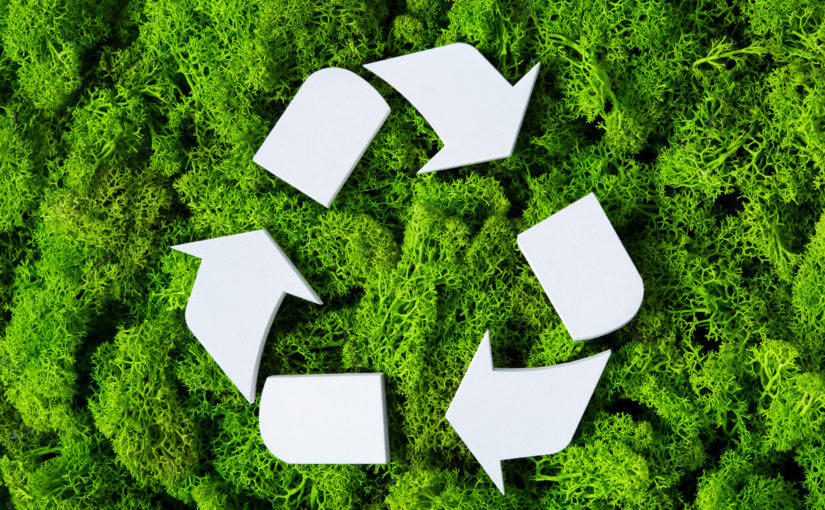Recognizing the Category and Handling of Different Kinds Of Waste
Effective waste monitoring is pivotal for environmental sustainability, calling for an extensive understanding of the category and handling of various waste kinds. Family waste, industrial by-products, unsafe products, digital refuse, and organic residues each require unique methods to make sure safety and decrease environmental damages.
.jpg)
Home Waste
House waste, including a broad array of discarded materials created from day-to-day living activities, represents a significant component of the total waste stream - recycling lives services. This group consists of organic waste such as food scraps, yard trimmings, and paper products, alongside inorganic materials like plastics, steels, and glass. The diverse nature of home waste demands efficient classification and monitoring to reduce ecological impact and advertise sustainable living methods
Effective house waste administration starts with partition at the source, helping with recycling, composting, and safe disposal. Organic waste, as an example, can be composted to create nutrient-rich soil changes, reducing land fill problem and enhancing dirt health and wellness. Recyclable products, consisting of paper, glass, and specific plastics, can be refined and repurposed, lowering and saving sources energy usage linked with new material manufacturing.
Furthermore, hazardous home waste such as batteries, digital devices, and cleansing chemicals requires specialized managing to avoid dirt and water contamination. Public recognition projects and convenient disposal choices play important functions in making certain proper disposal and recycling of these materials. By applying robust waste decrease approaches and promoting community engagement, communities can considerably minimize the ecological footprint of family waste.
Hazardous Waste
Industrial waste, a major contributor to international waste generation, encompasses a diverse range of materials generated by production, building and construction, and other industrial tasks. Effective monitoring of commercial waste is vital for minimizing environmental influence and promoting sustainable practices.
The handling of hazardous waste usually involves numerous processes: collection, treatment, disposal, and segregation. Collection systems are designed to efficiently gather waste materials from numerous resources within an industrial operation. Partition is essential, as it ensures recyclable materials are divided from non-recyclable ones, which can be guided towards ideal recycling or disposal networks. Therapy processes, consisting of physical, chemical, and organic approaches, are used to lower the poisoning, quantity, and environmental influence of the waste. Disposal techniques like landfilling or incineration are made use of for waste that can not be reused or dealt with.
Embracing techniques such as waste reduction, resource healing, and recycling can considerably minimize the problem of industrial waste on the setting, adding to more lasting commercial methods.
Contaminated Materials

Harsh wastes can damage or destroy living products and cells. Combustible wastes can quickly ignite, posturing fire threats, while responsive wastes can cause surges or launch poisonous gases upon contact with various other materials.
Reliable contaminated materials management involves a number of key methods: identification and partition of dangerous products, safe transportation and storage space, and proper treatment and disposal. Therapy techniques may include chemical neutralization, stabilization, and incineration. Regulatory compliance is important, directed by structures such as the Resource Preservation and Recuperation Act (RCRA) in the USA, which ensures ecologically audio and secure management of contaminated materials.
Electronic Waste
Digital waste, usually abbreviated as e-waste, stands for a growing difficulty in waste administration as a result of the quick obsolescence of modern technology. This group incorporates a find here wide array of discarded electronic devices, consisting of smartphones, computers, tvs, and family appliances. The complexity of e-waste hinges on its make-up; these items consist of a mix of beneficial materials such as gold and copper, as well as unsafe substances like lead, mercury, and cadmium.

Legislation and regulations, such as the European Union's Waste Electrical and Electronic Equipment (WEEE) Regulation, objective to advertise accountable e-waste monitoring. These plans mandate suppliers to assist in the collection and recycling of electronic products, thus reducing the concern on garbage dumps and reducing environmental contamination.
Organic Waste
Organic waste, incorporating naturally degradable products such as food scraps, backyard trimmings, and agricultural residues, makes up a considerable section of the metropolitan strong waste stream. This kind of waste is noteworthy not just for its volume however additionally for its possible environmental effect otherwise handled correctly. Organic waste can decay anaerobically in landfills, generating methane, a potent greenhouse gas contributing to environment modification.
Correct handling of organic waste entails numerous methods. Additionally, diverting food waste from landfills through contribution programs can alleviate food insecurity while minimizing waste.
Municipalities and businesses are increasingly recognizing the importance of natural waste monitoring. Carrying out detailed organic waste recycling programs not just minimizes ecological effects however likewise lines up with wider sustainability goals, promoting a circular economic climate where resources are consistently recycled and repurposed.
Conclusion
Reliable waste management and environmental defense require an extensive understanding of the category and handling of different waste types. Family, industrial, hazardous, digital, and organic waste each call for distinctive procedures for disposal, therapy, and partition. Proper administration decreases ecological effect, saves resources, and promotes sustainability. Applying ideal approaches for each and every waste type guarantees risk-free and accountable waste administration methods, eventually contributing to the protection of communities and public health.
Effective waste monitoring is pivotal for ecological sustainability, needing an extensive understanding of the category and handling of numerous waste types.Household waste, encompassing a wide range of discarded materials created from everyday living activities, represents a considerable Click Here component of the general waste stream.Industrial waste, a significant factor to global waste generation, incorporates a varied array of materials generated by manufacturing, building, and other commercial tasks (recycling lives services).Harmful waste, a critical worry in waste monitoring, consists of products that position substantial risks to human health and wellness and the setting due to official website their harmful, destructive, flammable, or reactive properties.Organic waste, including biodegradable products such as food scraps, backyard trimmings, and farming deposits, makes up a substantial section of the metropolitan solid waste stream